We sent Robert Urquhart to Amsterdam to meet the hugely talented collective LUST, a fifteen-strong bunch of graphic media cartographers with strong views on the future of graphic design.
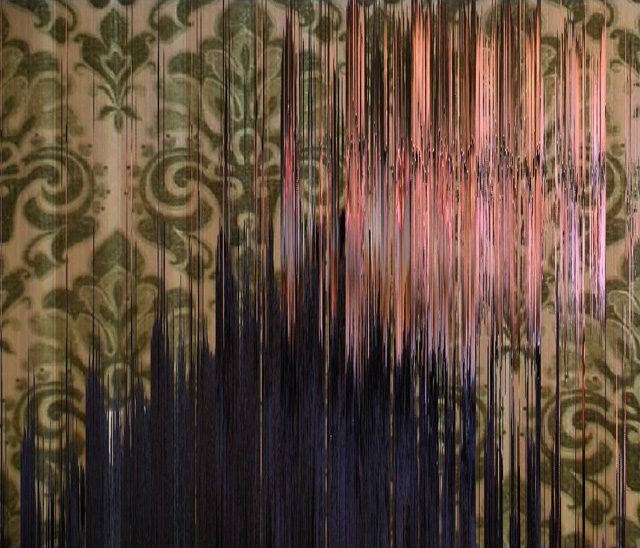
Wandering the streets of The Hague in Holland looking for LUST, I find the studio next door to where the prolific 16th century landscape painter Jan van Goyen once lived, and in the same property once rented by 20th century religious publisher Johannes Nicolaas Voorhoeve. The studio interior is opulent; dark and gorgeous, oak panelled, the ceilings are high and the mantlepiece abrim with trinkets.
The studio operates as a collective with fifteen employees, but I'm here to meet two of the three studio partners, Jeroen Barendse and Dimitri Nieuwenhuizen. The third, Thomas Castro is away on the day I visit.
Founded in 1996, LUST works across a broad spectrum of media, most of which can be placed under the increasingly outmoded term of 'new media'. These forays include abstract cartography, data visualisations, interactive installations, architectural graphics as well as print and book design. 2014 has been a very busy year for the studio, which takes on approximately thirty projects a year.
Highlights this year include an interactive installation for the Stedelijk Museum exhibition Type/Dynamics that looks at the work of the work of the late graphic designer Jurriaan Schrofer, a website dedicated to the notion of talent called In No Particular Order and a catalogue for the 6th International Architecture Biennale, Rotterdam, IABR–2014–Urban By Nature.
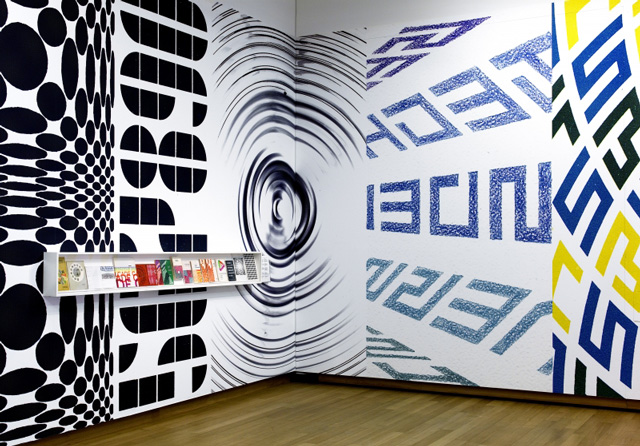
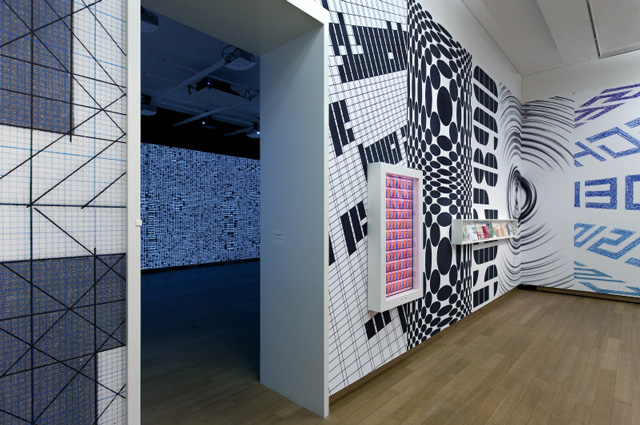
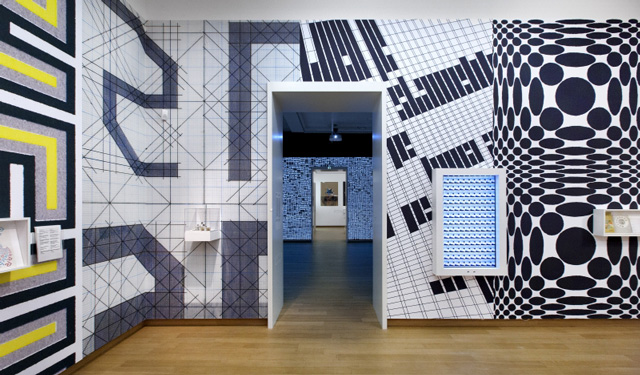
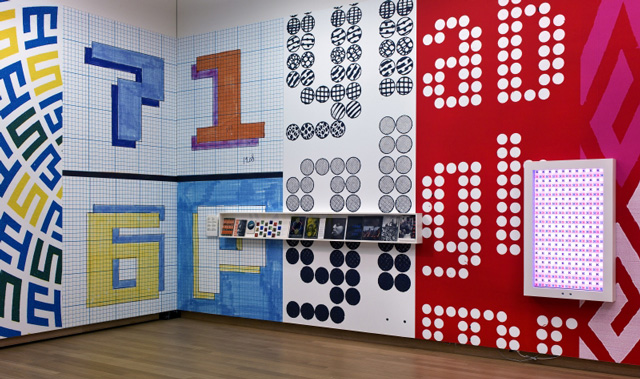
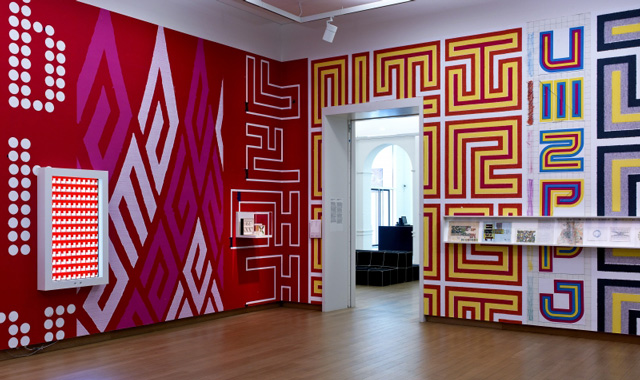
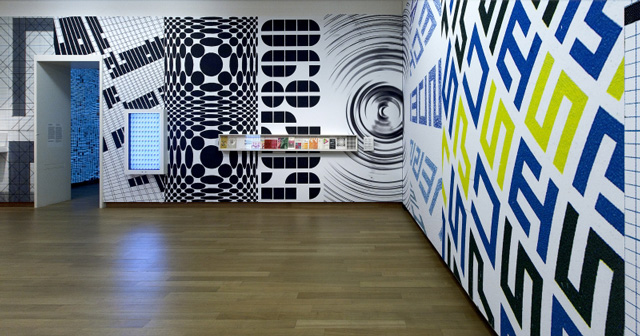
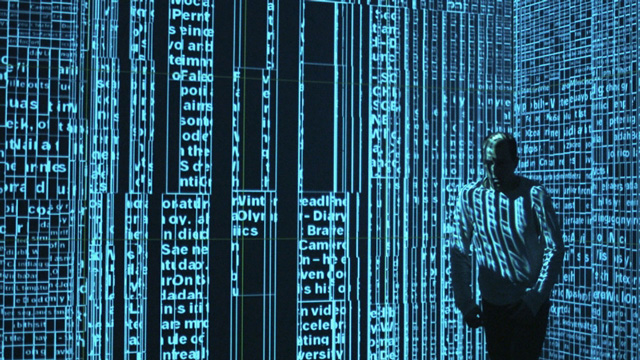
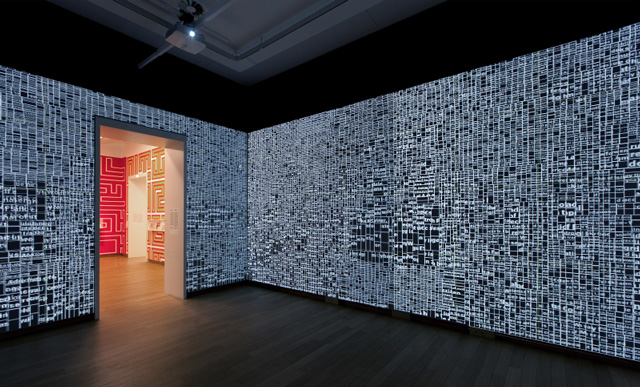
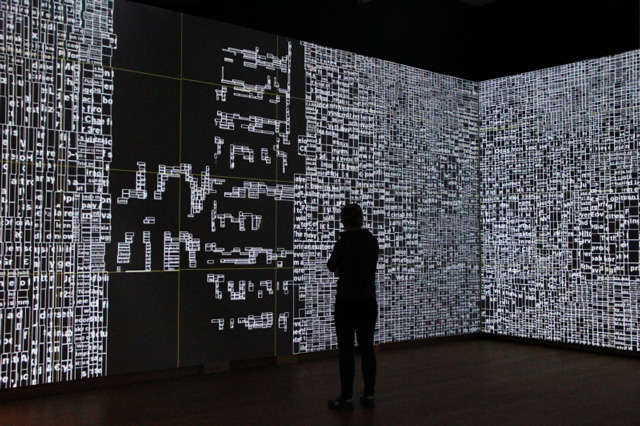
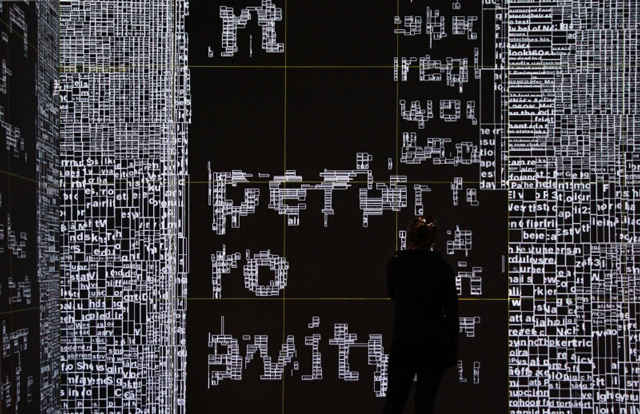
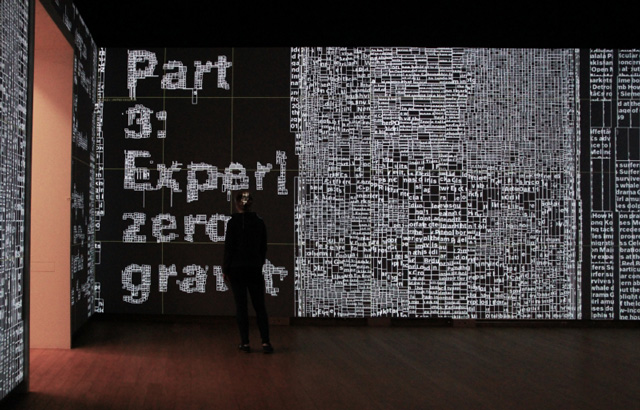
As well as the studio, the collective also runs LUSTlab, a research laboratory, situated down the street from the studio and founded in 2010, in order to develop new communication tools and physical products using digital content. 2014 has seen the lab create Hyperlocator, an installation for the GEMAK building in The Hague, a heatmap outdoor installation highlighting the spatial organization of social life in the Schilderswijk district in The Hague.
“Basically we build tools' explains Nieuwenhuizen, “once you build a hammer you can build a house with it but you can also build a boat with it – so it's more like autonomous work should be – you can't touch that of course – but the tools you build to make that work are things that we can develop commercially...”
“We put a lot into the research process” says Barendse it depends on the topic but generally we look at things from a philosophical point of view and technical point of view, particularly at tools and looking in to systems, whilst Thomas is looking for the larger gesture – the big picture”
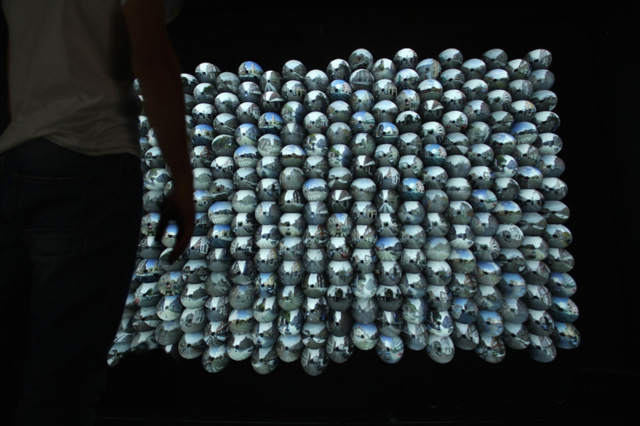
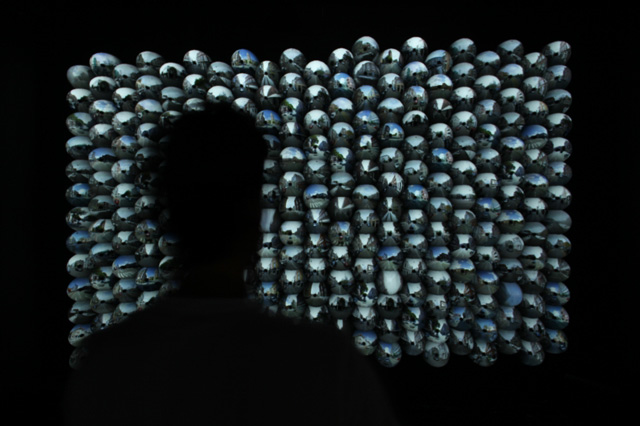
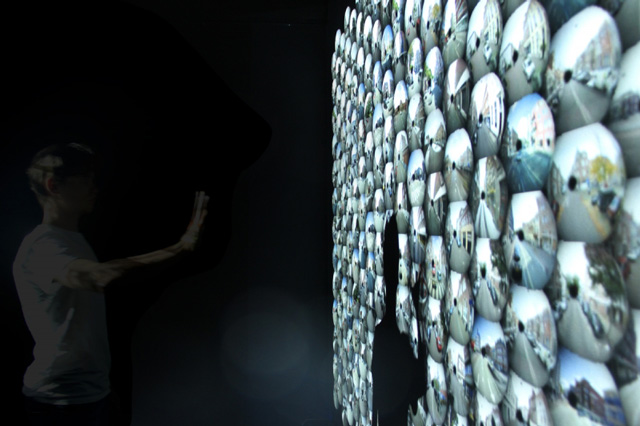
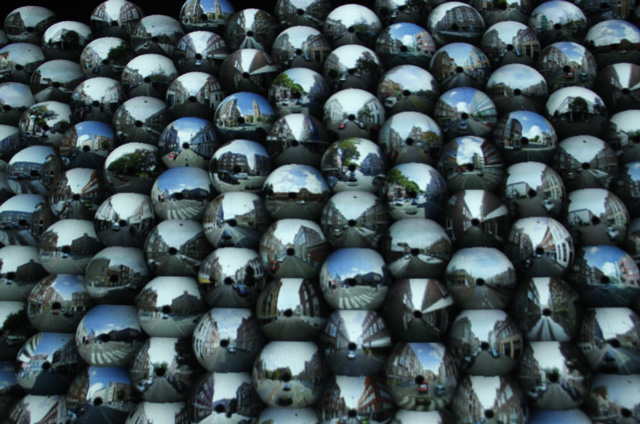
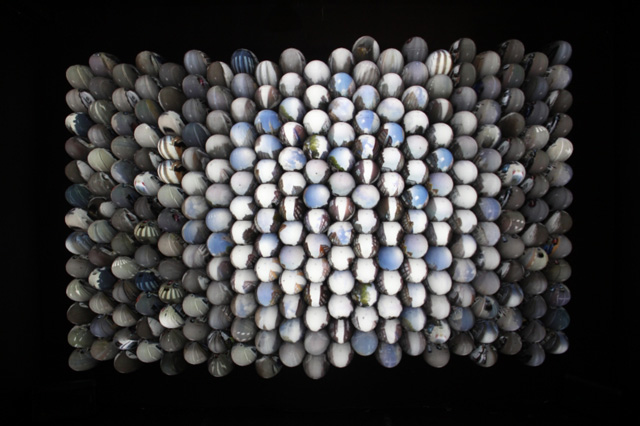
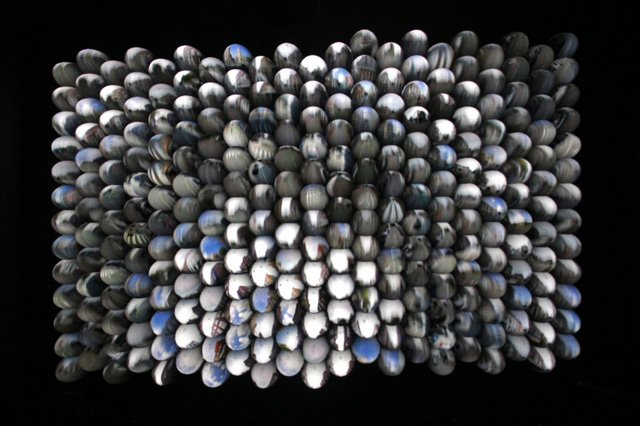
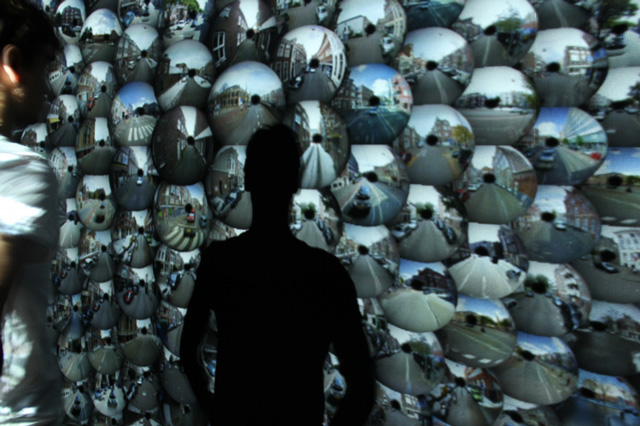
Seminal Dutch design critic and writer Max Bruinsma is extremely familiar with the work of LUST, having interviewed and written about them: “They fit an explorative region of contemporary Dutch design alongside Metahaven, Benlaloua and others who explore today's visual languages from the vantage point of their underlying structures. This is the 'fundamental physics department' of Dutch Design.”
Joris Maltha and Daniel Gross of design studio Catalogtree, based in Arnhem, have known the collective, initially formed by Castro and Barendse, since the very beginning. “They really captured people’s imagination with their degree show” says Gross of Castro and Barendse, “They worked together on that and produced the LUST bible: They placed a blank sheet of paper on a Xerox machine and copied it 150 per cent to enlarge it, printed it out and repeated the process over and over again again with a a ream of 500 sheets.”
Through infections on the screen and dust on the glass the embryonic LUST studio created an ever-expanding universe of blobs and scratches that a reader (for it was in book format) could almost fly through. “We remember this as something so clever and a great 'misuse' of technology that was super inspiring to us, I think it's still inspiring to them as well,” Multha adds.
Bruinsma too notes the graduation show as a great entrance for the studio, “I thought their graduation show was brilliant, even if I had no clue to its meaning. Ever since, I've been trying to grasp what LUST is doing, and am very happy to even remotely understand what they're doing every now and then” says Bruinsma wryly. Graphic design is a disappearing profession. I quit teaching in Utrecht because I thought it was hypocritical to teach students a profession that's not going to exist anymore Back to the philosophy of the moment: “Digital art is in a transitional phase, just like in the 'real world' where technology is slowly becoming ubiquitous or invisible slowly” reasons Barendse, “it's probably the same with art and design: The art that stands out for us is one where you experience what it can do, but not what it is, so basically you are not aware of the technology anymore.”
LUST is at the forefront, not only in craft and production, but in the deeper thinking, philosophy and education of digital design. All three founders have an immense background in education; Nieuwenhuizen as Tutor and Supervisor Sandberg@Mediafonds Masterclass, Sandberg Instituut and teacher of Graphic & Interaction Design at the HKU University of the Arts Utrecht, Barendse as Graphic Design, Typography and Interactive Design tutor Artez Hogeschool in Arnhem, and Castro who is currently Head of Graphic Design ArtEZ Academy of Art & Design Arnhem. LUSTlab appears to be a melting pot of experience and, perhaps a reaction to recent challenges to funding and post-graduate education in Holland. What does the studio make of the current graphic design education system in Holland?
“There are still more than ten art academies teaching graphic design and I think that's a problem...” says Nieuwenhuizen, “It's a problem because graphic design is a disappearing profession. I quit teaching in Utrecht because I thought it was hypocritical to teach students a profession thats not going to exist anymore” he says.
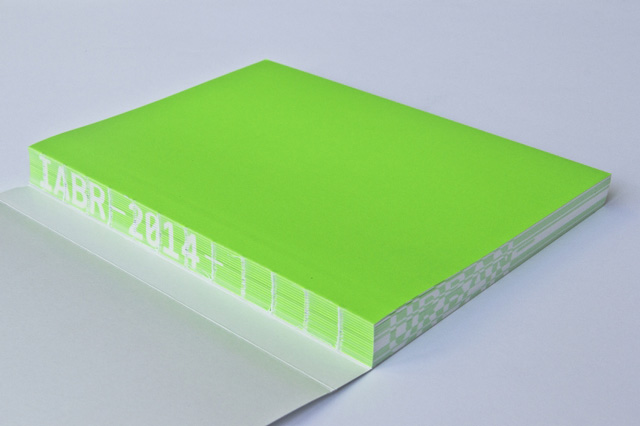
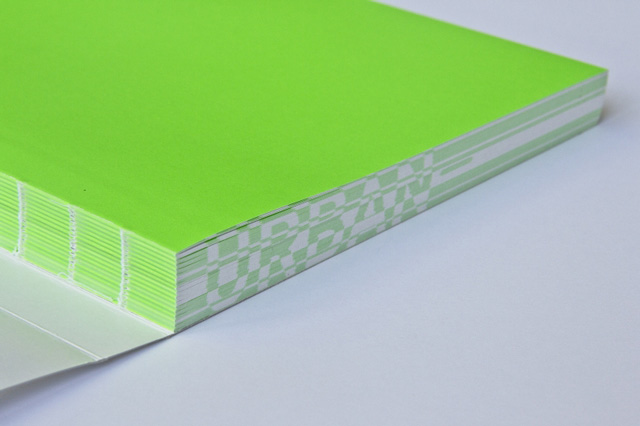
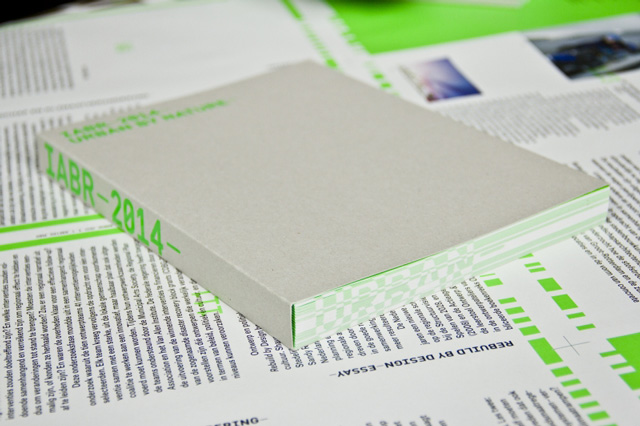
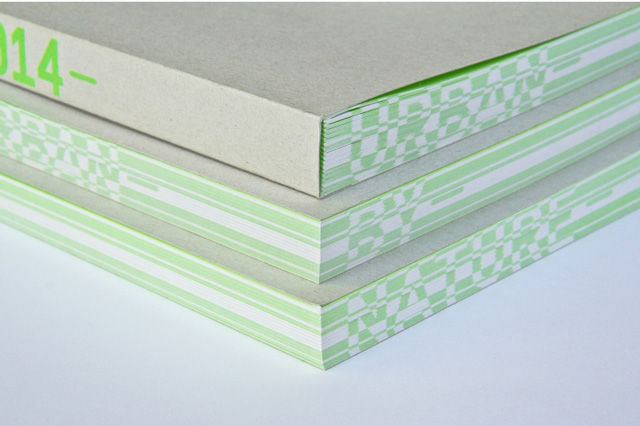
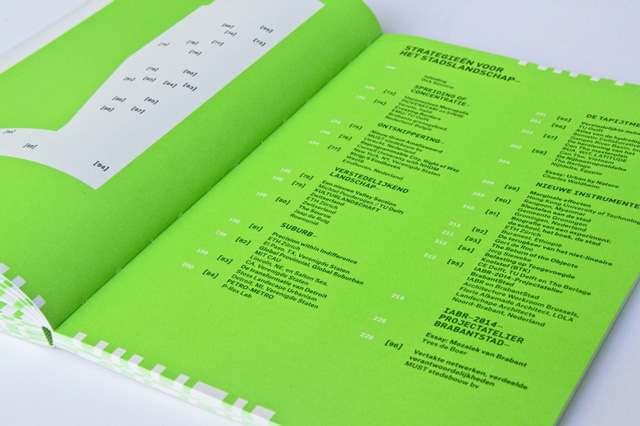
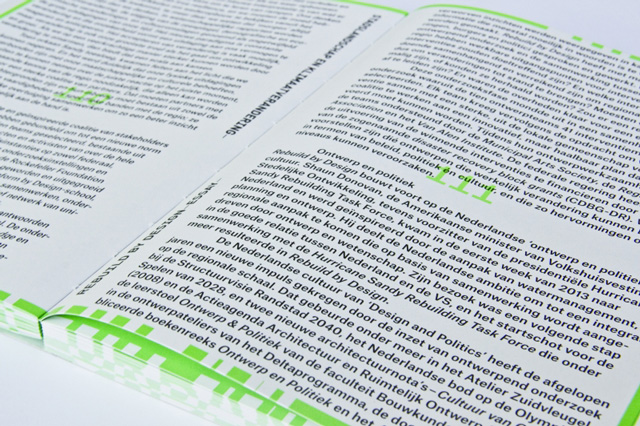
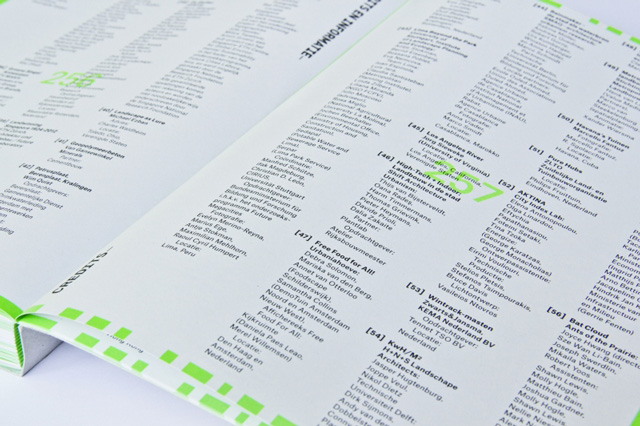
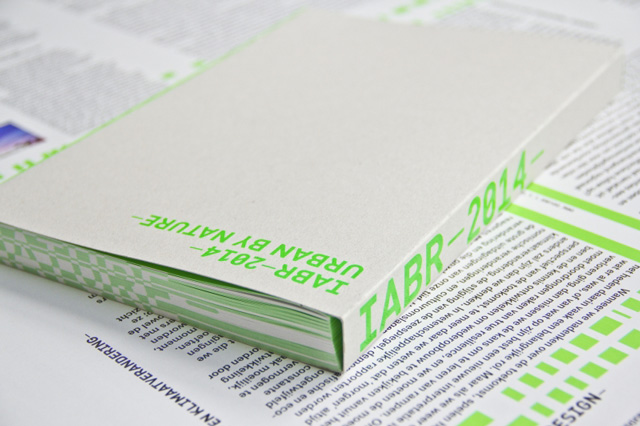
Is this doomsday scenario really the case? “Ok, well it's going to be a niche,” Nieuwenhuizen concedes, “it's going to be different for sure, and I definitely think that there is a huge opportunity for graphic design departments to make a move towards new media, because the golden days of graphic design were fantastic.”
Is this about designers learning to code, learning a language? “The task of an art academy is not only to teach about form and methodology, but also the tools,” says Nieuwenhuizen. “This is what they totally lack, they teach them a little bit of HMTL or whatever and that's it. For us coding is our main tool, its like using a pencil, but to be able to experiment you need to know your tools, and art academies seem to be more more interested in editorial or about research. These things are all important, but to be able to experiment and come up with new things you need to know how to bring ideas to life.”
Jonathan Puckey of Amsterdam based interactive design studio Moniker, and self confessed 'sparring partner' of LUST also picks up on this fact and agrees, “Look at the normality of technology: All these dotcom companies are doing more interesting things than graphic designers are doing right now, so then as an interactive design studio we have to find new boundaries, and I think we are trying to do that.”
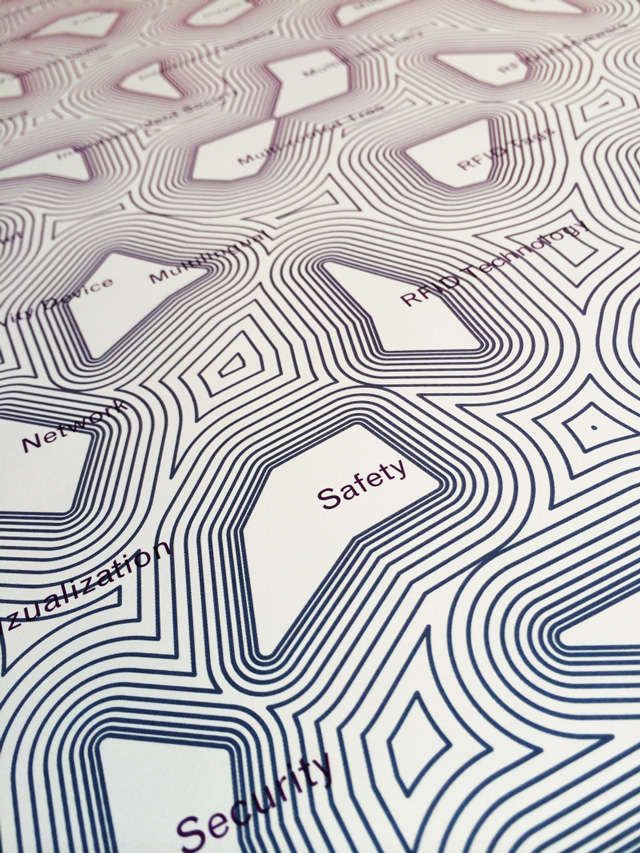
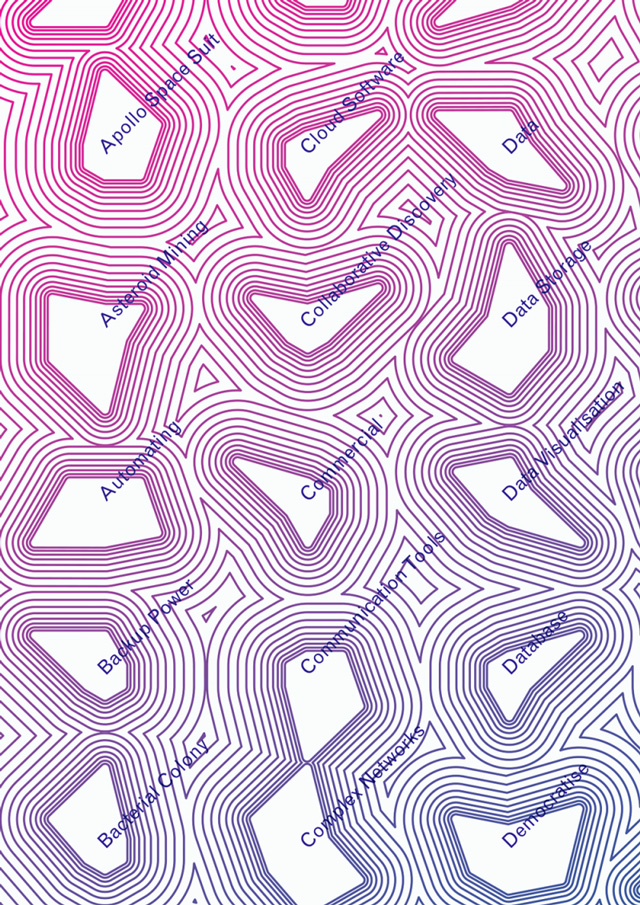
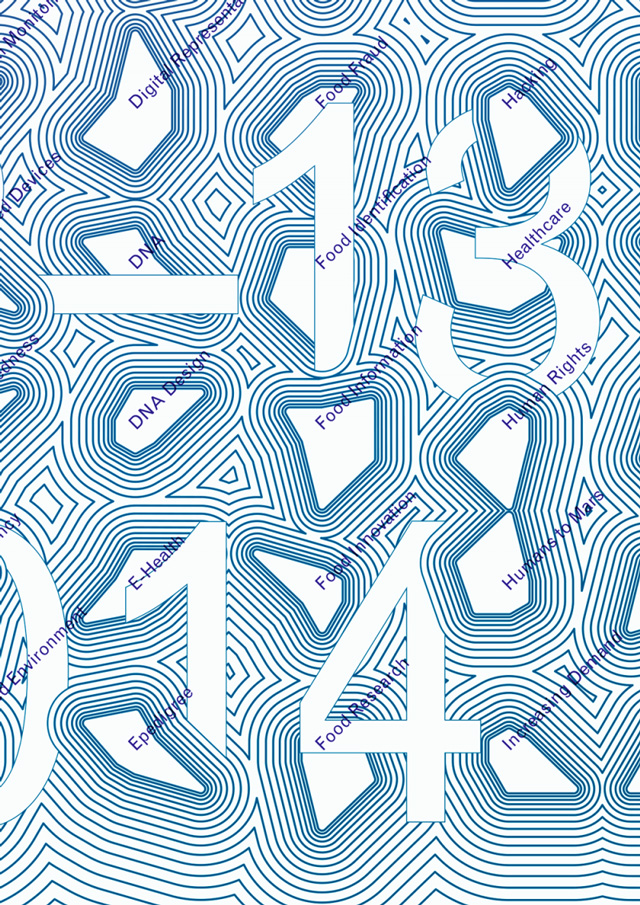
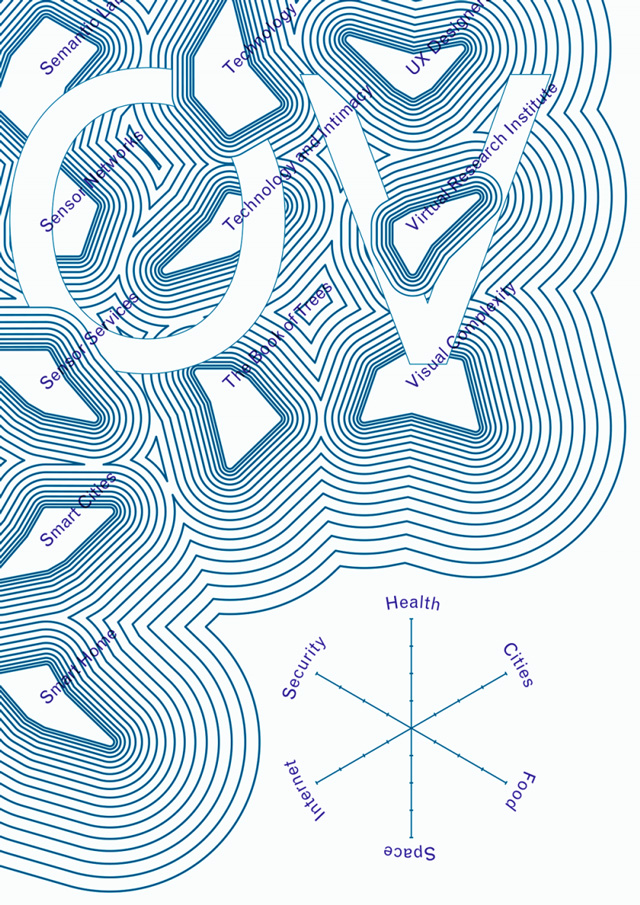
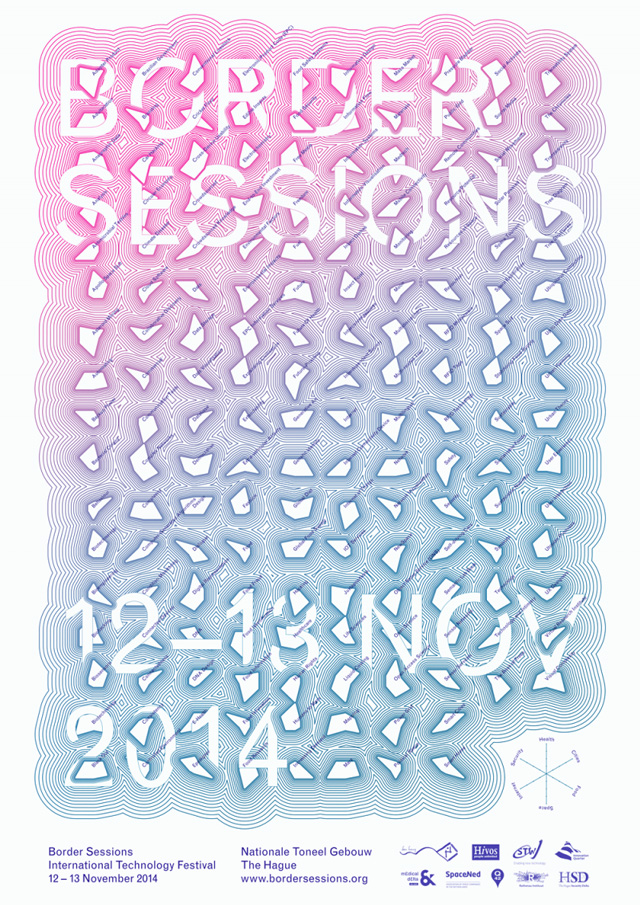
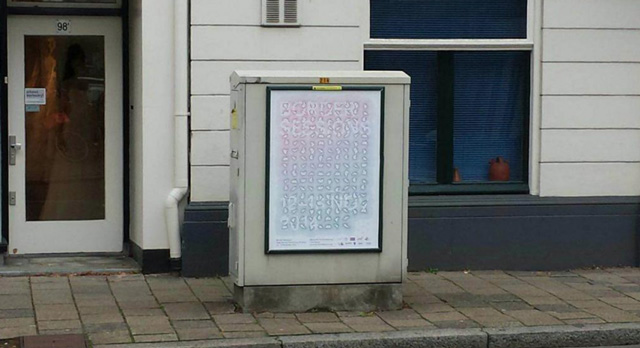
Is it reality now that graphic design, as we knew it, is dead?
“Thats a good question,” Puckey admits. “I personally find myself identifying myself less and less as a graphic designer. I find myself with the idea of the graphic design is becoming easier – design behaviour, design anything – the idea that you limit yourself to any one medium becomes pointless and I think with LUST, they've had this multi discipline approach for such a long, long time that they naturally fit this new realm for graphic design”
Are LUST still graphic designers? They still appear to map and chart the unknown – are they, perhaps, graphic media cartographers? Looking at pieces like Megastructure Schiphol, Design in Spectacular Simplicity 2010-2013, Glasgow Atlas and Megacities (2014) and Urbansensing (in progress), a project that looks at the metabolism of the contemporary metropolis, it's clear that there is an interest in data beyond its visualisation properties.
“I think 'graphic media cartographer' is a great title,” agrees Maltha, “it's certainly in there with Jeroen Barendse and Thomas Castros' love of book typography. If you look at their projects they gravitate towards designs that are generative. They like the designs to be open and evolve from the content, its only in the second instance that they look at more detailed typography, they prefer complex information and from that they generate their designs.”
What about the human element? LUST don't just sit behind banks of computer screens or beneath URLS... “They've always had a preference for a physical trigger, even if their projects are completely digital, they always try to manifest them in a public realm” muses Gross, “they are about experience in spaces, they investigate the way you interact with their installations a lot and the technologies that enable you to do that investigation.”
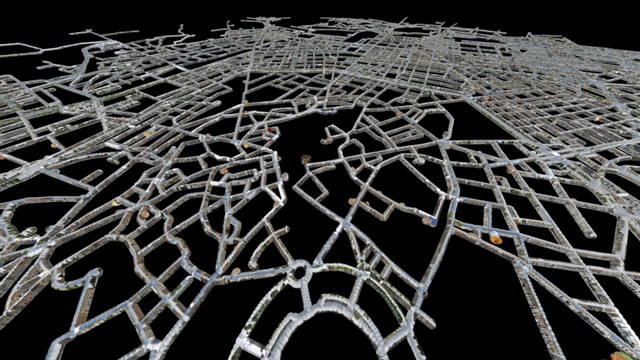
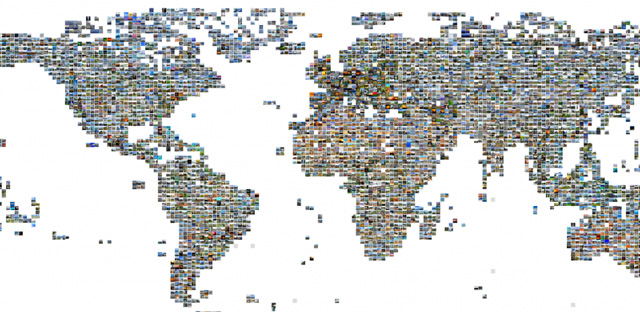
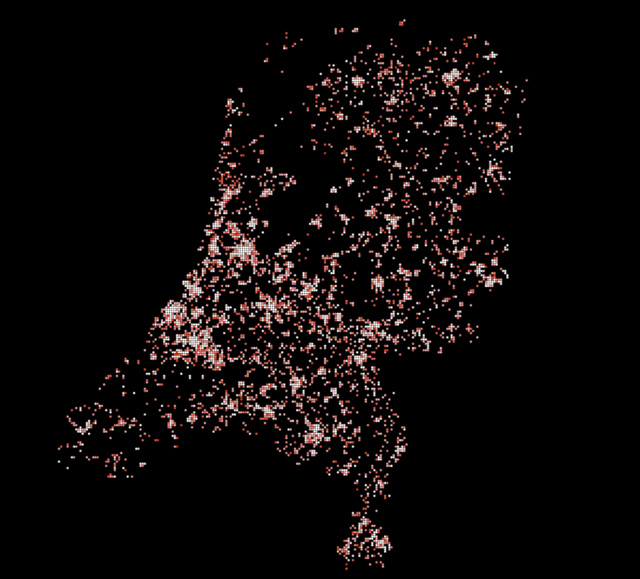
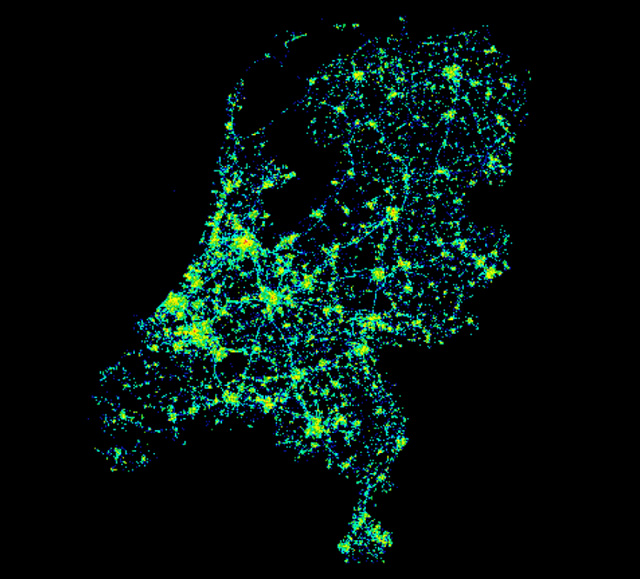
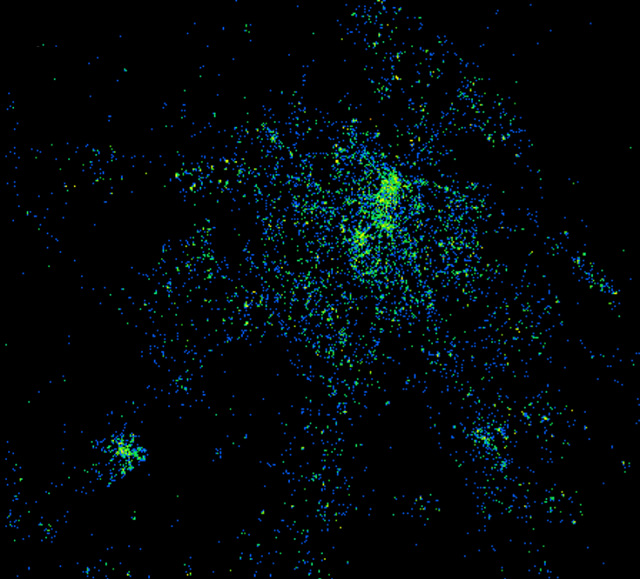
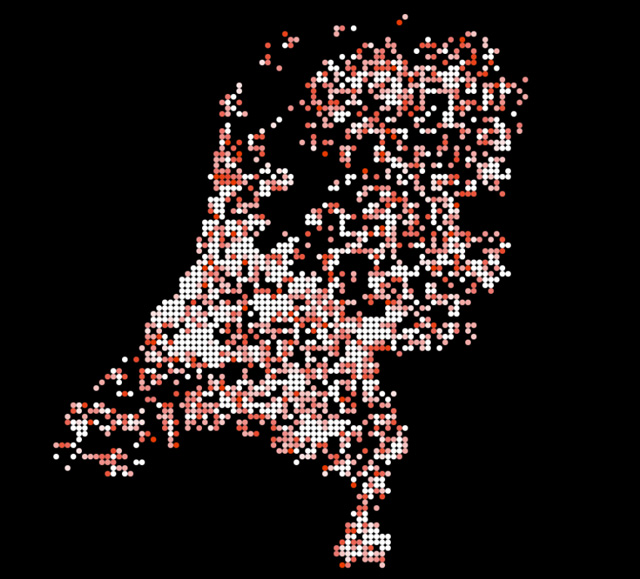
One project that springs to mind when talking about playing off randomness and audience interaction was At Random? Networks and Cross-pollinations, an exhibition curated by the Museum De Paviljoens in Almere, Netherlands in 2007.
Using a printing process known as ‘split-fountain’ printing, this technique involved printing multiple colours on the same roll during a single print run. Rather like its degree show LUST Bible the project used a large amount of paper stock to reveal process – in all 80,000 A3-sized sheets were exhibited as a paper sculpture, in ten stacks of 8000 sheets, with visitors able to print their own unique copy of the exhibition catalogue.
Zooming in and focusing, traveling through a self-inflicted universe, sounds like the LUST bible is in constant reference...“Part of what they are interested in is using design as a means to look at patterns in social behaviour in people on a large scale, looking a society as a whole by zooming out to see larger patterns,” notes Maltha.
Does Puckey see these patterns? “Yes, it feels like the intention comes from the data or information from the project its self – the content should be the thing that designs the product” Puckey concurs. And does this ring true with Gross? “With them its the attitude rather than the medium” Gross picks up, “I think there is a dependency on digital media and the wider world but they strongly believe in creating your own tools. Research is the only way and their independence as a studio is a very strong driving force – that’s why they need a place to do whatever the hell they want.”
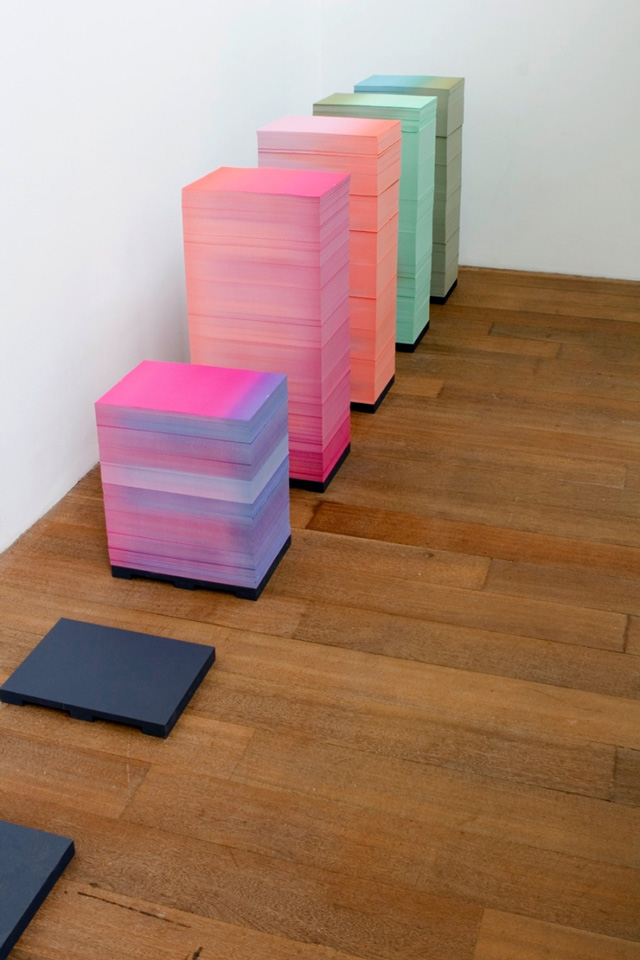
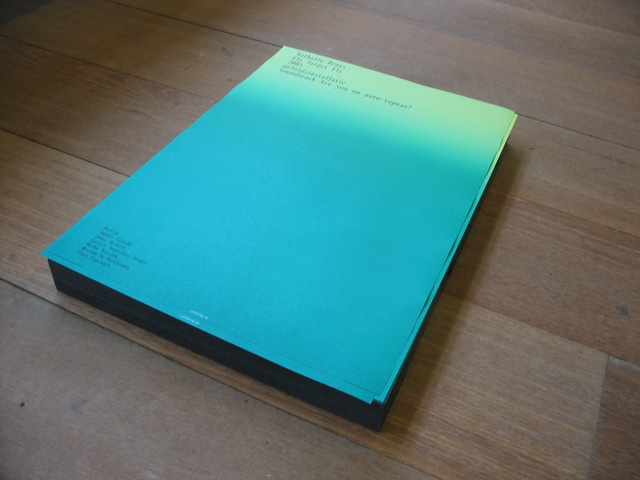
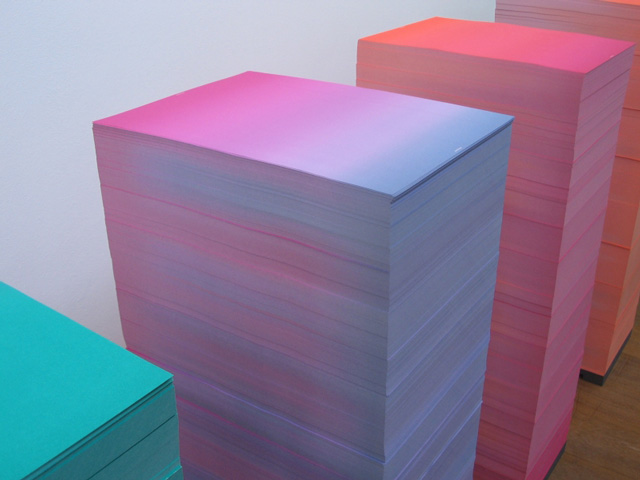
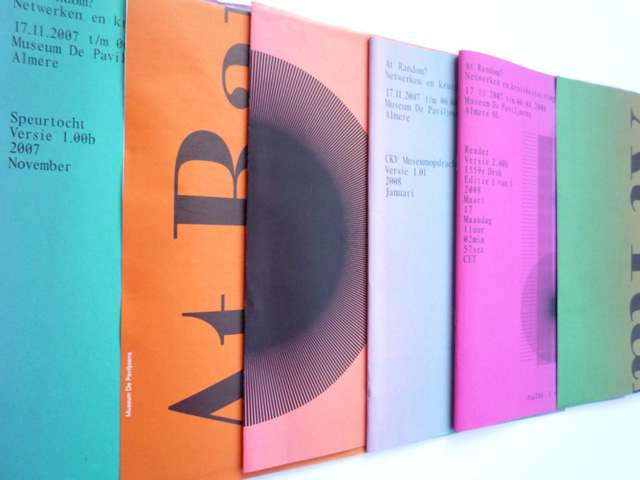
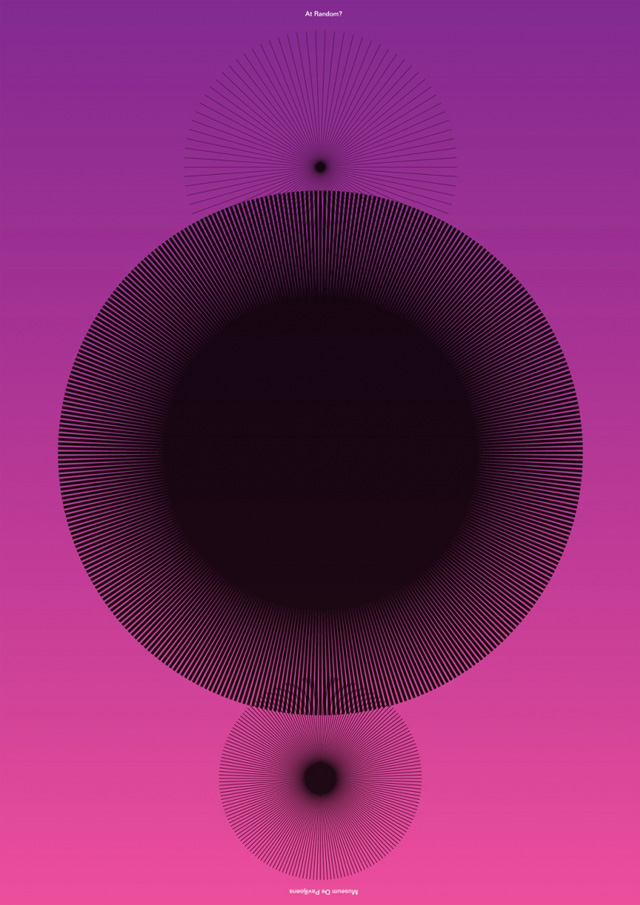
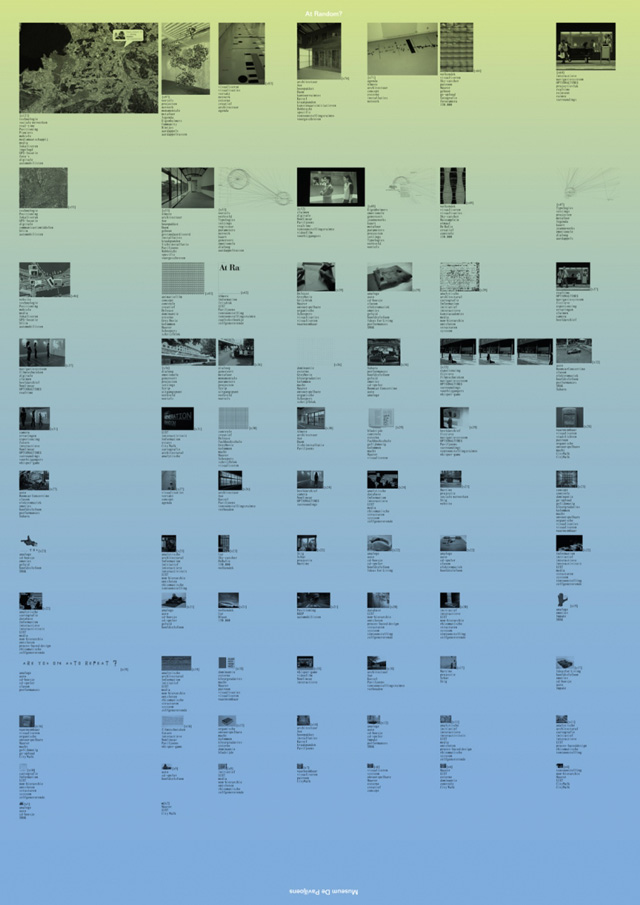
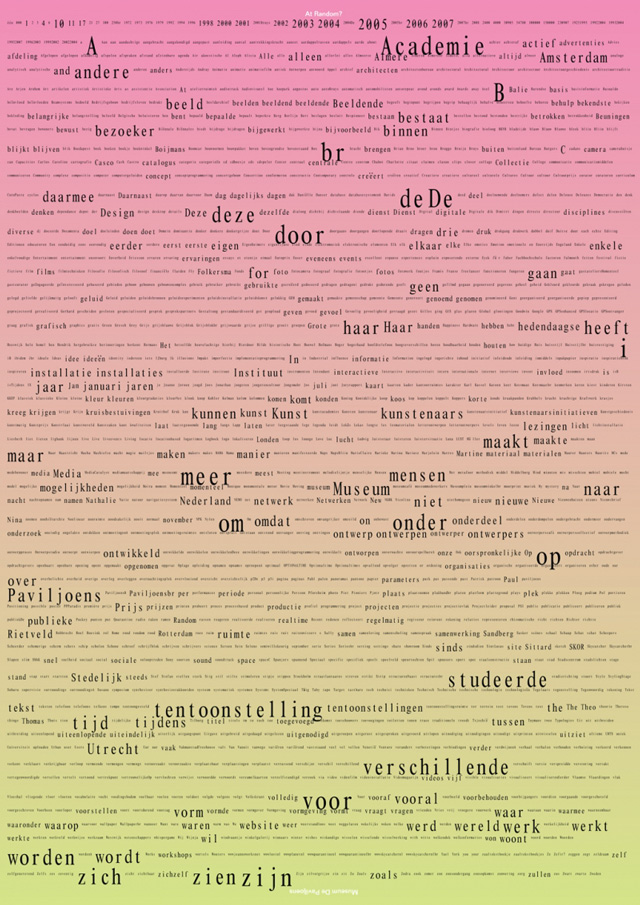
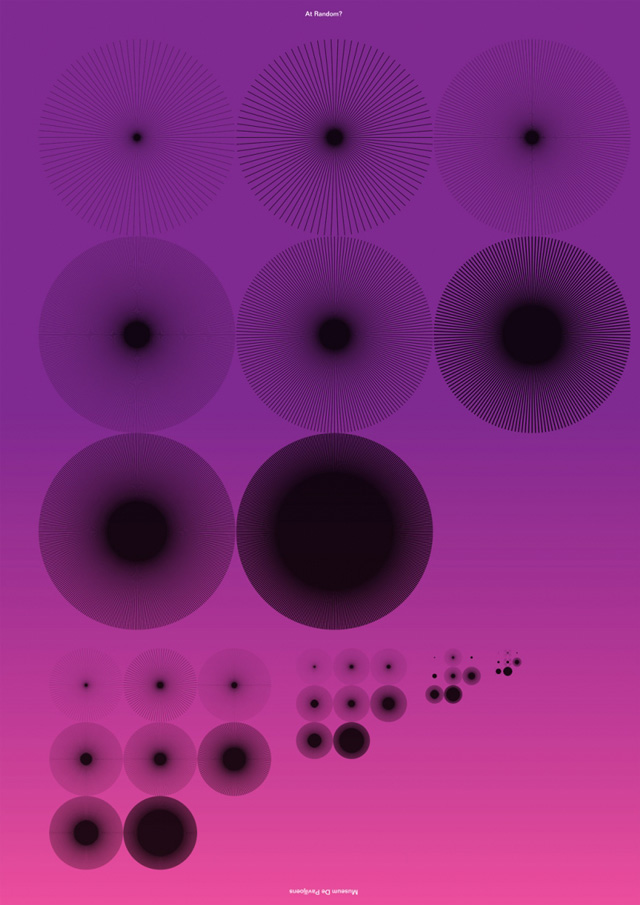
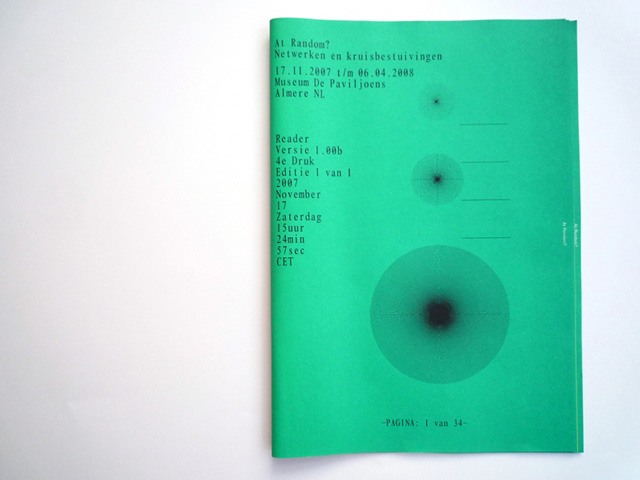
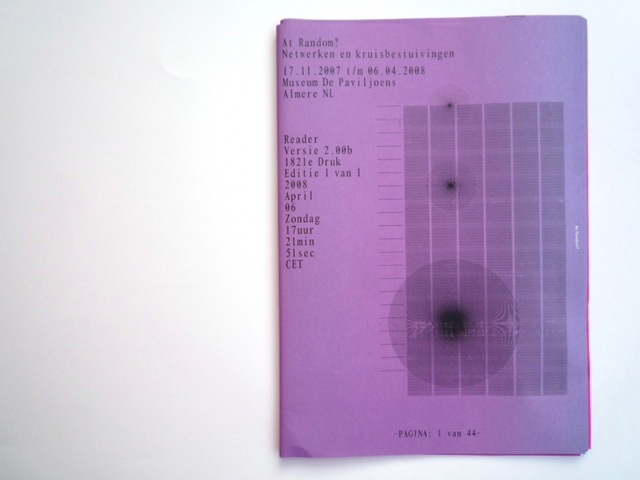
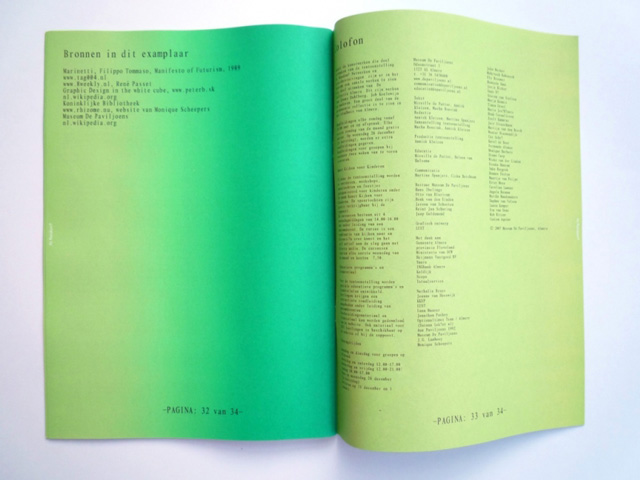
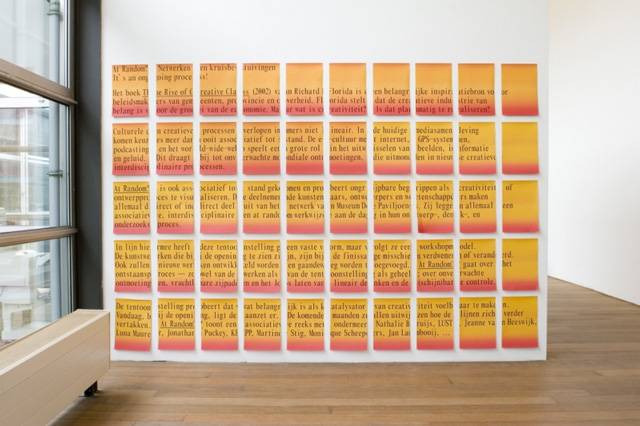
The place to do 'whatever the hell they want' appears to be LUSTlab, a short walk from the main studio. The lab looks rather like an empty TV studio or rehearsal room, there's not much furniture or tech but there is a quiet sense of excitement about the place.
Some students appear to be building drones. “We are doing some research” says one, mischievously, “we want to see how much it can carry and how stable we can control it – then we want to build a structure that a drone carries...”
Carrying what? “Lights, camera and sensors and its own body. What can we do with it that we couldn't do otherwise? Gather data from people that we'd otherwise not get...” How does the lab deal with technology that has such a high 'wow' factor, one can't help but be impressed by flying bots... I ask whether part of what digital design is about stems back to spectacle – is it about the circus, the 'wow' factor? Do you need to make people go 'wow' for things to work?
“Wow is not a word in our vocabulary” says Nieuwenhuizen, “it’s a word that is too close to entertainment or too like a short ‘wow’…and then you look again and go 'Oh – a let down.' I'd rather leave people asking questions, to let the idea slowly enter you and never leave.” A poetic answer.
“Maybe one of the biggest problems with new media work, is that its so easy to achieve an effect” Nieuwenhuizen remarks, continuing the theme, “you can work with light and movement and something happens there – the ‘wow factor’ is easy to achieve in that sense, but what is so inherent in this type of media that you can add so many layers of information, experience and dynamically evolve things – it’s so much more interesting to investigate this aspect of new media.”
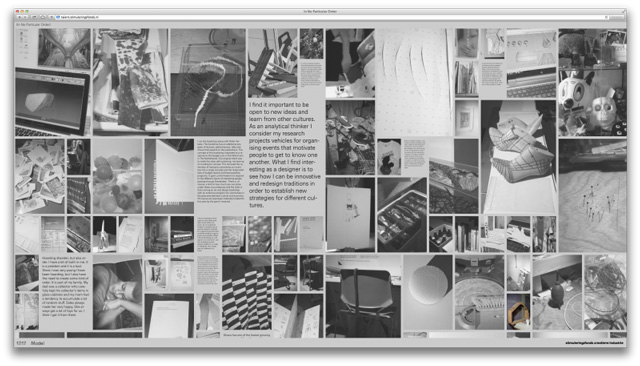
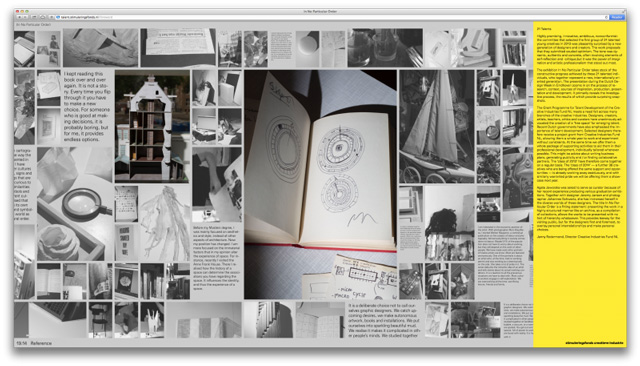
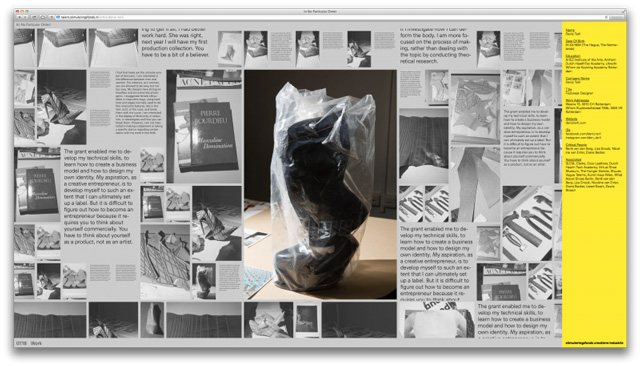
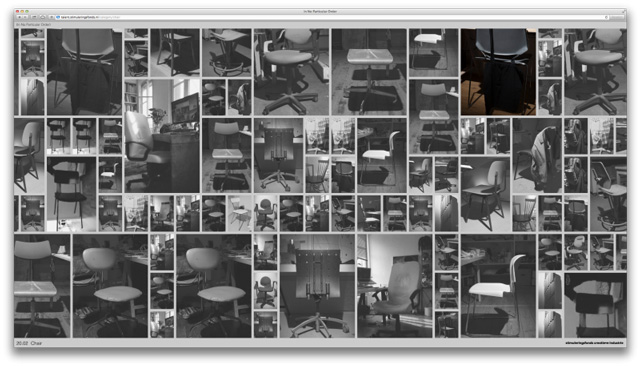
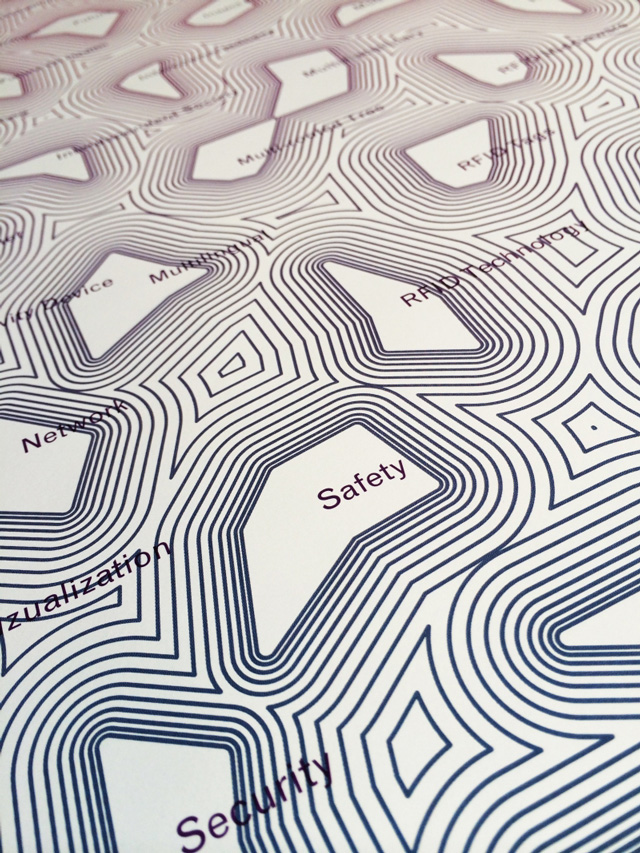
I ask Puckey this question of technology and entertainment... “Yes [LUST are involved] but in a good way, it’s more sci-fi than what we are doing I guess. Their work is very practical, it shows real insight on data but its more 'show' – when you see The Res Sapiens desktop lamps piece for example, from our point of view we'd say 'how does it happen exactly?' But that's not what they are about, there is a mystery about them” says Puckey.
Is LUST deliberately and willfully non-emotive? “It seems like its point of view stems from the data, it's as if the data designed the project,” says Puckey. “They remove themselves as humans and somehow it's as if the data designed it.”
Whilst LUST lurk in data, making the 'invisible visible' as Nieuwenhuizen often states, it positively basks in human interaction and are highly visible in collaboration.
“It's not necessarily about 'sharing the fruit', although it's an aspect, but more about collaboratively growing it,” remarks Bruinsma on their appetite for getting their work into the public domain, “And for that you need physical encounters as well as virtual” he continues. “LUSTlab is not just about 'virtual' – it's about how digital and material merge IRL. How information becomes material experience; how the 'virtual' is or can be 'corporeal'...”
As if turning pages in the bible of LUST, Barendse sums up the studio attitude, “We're just trying to create a way more interesting subject, I think that layering of different meanings is something we all try to achieve. “The end result is not science” adds Nieuwenhuizen, “but it perhaps makes people aware of the existence of certain rules.” Explore LUST's projects in more detail at lust.nl



